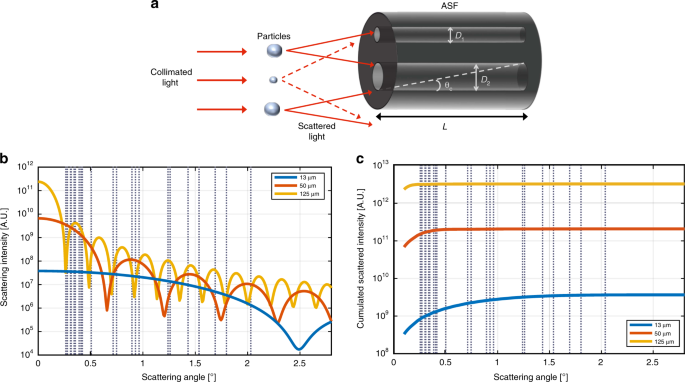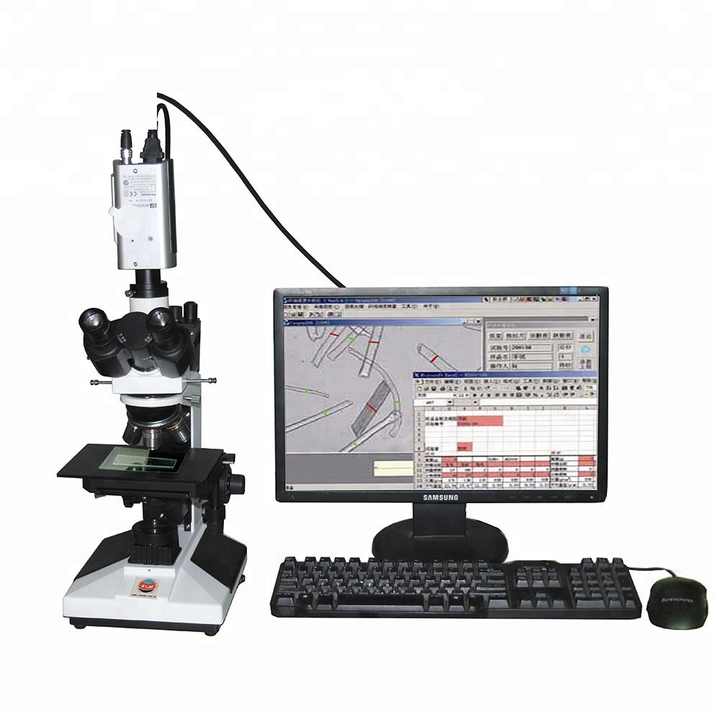Maximize Your Fiber Optic Efficiency: Recognizing Optical Fiber Size Analyser Innovation
The performance of fiber optic systems is critically affected by the precision of their size, a factor often neglected in the pursuit of ideal signal stability. Understanding the modern technology behind optical fibre diameter analysers exposes the intricate balance in between measurement accuracy and production quality. These tools not just improve conformity with sector criteria but additionally give real-time understandings that can preemptively deal with prospective concerns. Nonetheless, the implications of their use extend past mere measurement; they can fundamentally change the landscape of fibre optic efficiency. What variables should one consider to harness their full potential?
Importance of Optical Fibre Diameter
The size of optical fiber plays an important role in identifying the efficiency and effectiveness of interaction systems. It affects numerous key specifications, consisting of the mode of light breeding, depletion, and data transfer capability. Bigger diameters commonly enable numerous light settings, helping with higher information transmission rates. On the other hand, smaller diameters often tend to sustain fewer settings, which can improve signal clearness and lower crosstalk.

Furthermore, recognizing the diameter's ramifications can cause cost financial savings by lowering the need for signal boosting and repeaters in considerable networks (optical fibre diameter analyser). In verdict, the value of optical fiber diameter can not be overstated, as it straight affects the overall efficiency and dependability of modern communication systems

Just How Diameter Impacts Signal Quality
Signal top quality in optical fibre systems hinges substantially on the size of the fiber. The size influences several crucial criteria, including depletion, transmission capacity, and modal diffusion. A smaller sized diameter can bring about higher depletion rates, leading to signal loss as light journeys via the fiber. This attenuation can endanger the stability of the transmitted information, resulting in a decrease in signal high quality, especially over fars away.
Alternatively, bigger sizes normally permit boosted light capture and lowered modal dispersion, improving signal clearness. In multimode fibers, a bigger core size can sustain multiple light settings, yet it may additionally present intermodal diffusion, which can deteriorate signal high quality. Therefore, selecting the optimal fibre size is important for attaining the preferred efficiency in details applications.
Moreover, the communication in between the fiber diameter and the wavelength of the light used plays a crucial role in establishing the effective transmission range and overall signal integrity. Recognizing exactly how fibre diameter impacts signal quality is necessary for network designers and engineers making every effort to optimize optical fibre systems for reputable, high-speed information transmission.
Overview of Size Analyser Innovation
In many optical fibre manufacturing procedures, exact dimension of fiber size is vital for making sure consistent efficiency and top quality (optical fibre diameter analyser). Diameter analysers are advanced tools developed to examine the physical measurements of optical fibers with high accuracy. They employ advanced optical and laser innovations to gauge the diameter, ovality, and concentricity of the fibre, hence providing essential information for quality assurance
These analysers can run in-line during the manufacturing procedure or as part of off-line screening procedures. In-line systems make it possible for real-time tracking, permitting manufacturers to readjust parameters immediately, consequently maintaining optimal production conditions. Off-line analysers, on the various other hand, give comprehensive examinations of batches, ensuring that any type of deviations from defined tolerances are identified and resolved.
Size analysers significantly add to the reduction of defects in optical fibers, enhancing general item dependability. By constantly determining vital criteria, these modern technologies help with compliance with industry standards and requirements. As the need for high-performance optical fibers proceeds to rise, the function of diameter analysers ends up being progressively crucial in attaining the preferred quality and efficiency criteria in fiber optic systems.
Key Functions of Fibre Size Analysers
Although various models of fibre diameter analysers exist, they generally share several essential functions that enhance their functionality and integrity. One of one of the most substantial features is high-resolution measurement capabilities, which make certain accurate size analyses, important for preserving quality assurance in fiber production. In addition, many analysers incorporate innovative optical sensing units made to discover minute variants in fibre diameter, thus offering important data for procedure optimization.
An additional vital feature is real-time tracking, allowing drivers to receive instant comments on fiber diameter throughout the production process (optical fibre diameter analyser). This capability helps with fast adjustments and decreases the possibility of problems. Numerous analysers likewise come equipped with easy to use interfaces, making it possible for drivers to conveniently browse with information and settings outcomes
In addition, robust data storage space and analysis performances are vital for tracking historical efficiency patterns and making sure conformity with industry standards. These functions collectively contribute to the effectiveness of fibre diameter analysers in enhancing fiber optic performance.
Finest Practices for Fiber Optimization

First, normal calibration of optical fiber diameter analysers is necessary. This makes certain accurate measurements and decreases prospective disparities that might influence efficiency. Next, preserving a clean workplace is crucial; dust and contaminants can bring about indicate destruction.
Additionally, it is very important to select fibers that fulfill particular application needs. This entails examining elements such as attenuation, bandwidth, and environmental problems. Proper setup techniques ought to additionally be stuck to, consisting of staying clear of sharp bends and too much Bonuses stress, which can endanger fiber honesty.
Moreover, employing innovative monitoring systems can help with real-time efficiency assessments, making it possible for prompt recognition of problems. Routine testing and maintenance must be performed to make sure that fibres continue to be within ideal functional criteria.
Finally, training workers on the current fiber optimization technologies and methods will boost their capacity to implement efficient techniques. By complying with these best practices, companies can substantially improve the efficiency and life expectancy of their optical fibre systems, guaranteeing efficient communication and information transfer.
Final Thought
Finally, the integration of optical fibre size analyser modern technology is vital for optimizing fiber optic performance. By guaranteeing specific measurements of fiber dimensions, these analysers considerably boost signal top quality and minimize losses throughout data transmission. Normal calibration and upkeep of the analysers are essential to support optimum performance and compliance with sector criteria. Ultimately, the application of this innovation assists in boosted information transmission rates and More Help strengthens signal stability, adding to the overall performance of fiber optic systems.
Signal top quality in optical fiber systems pivots dramatically on the size of the fibre.In several optical fibre manufacturing processes, precise measurement of fibre diameter is crucial for making sure consistent efficiency and top quality. As the demand for high-performance optical fibers continues to rise, the role of diameter analysers becomes progressively essential in accomplishing the preferred quality additional info and efficiency criteria in fibre optic systems.
These features jointly add to the efficacy of fiber size analysers in optimizing fibre optic performance.
In verdict, the combination of optical fiber diameter analyser innovation is crucial for maximizing fiber optic efficiency.